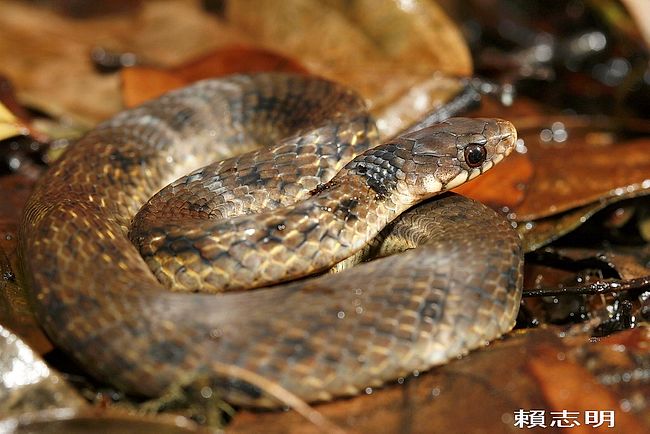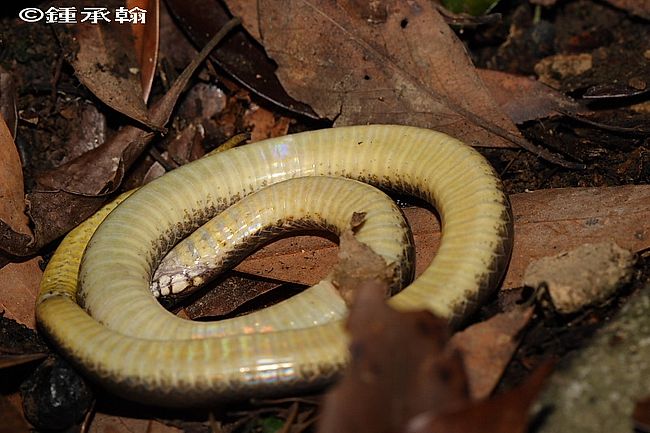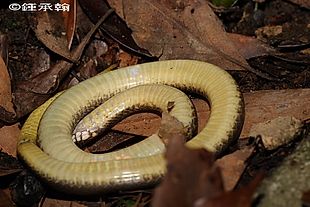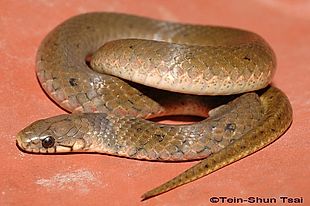Plagiopholis styani
Chinese Mountain Snake
福建頸 斑蛇 (fu2jian4jing1ban1she2)
Status: Not Protected
Non-venomous
More Photos
- P. styani in the wild (scroll down)
Family
Colubridae, subfamily Lycodontinae
Max. length
40 cm
Occurrence in Taiwan
The only records In Taiwan are from Yangmingshan National Park near Taipei and around the Northern Cross-Island Highway. Very rare.
Global Distribution
South China (Fujian, Guangdong, Guangxi, Jiangxi, Zhejiang, Anhui, Sichuan, SE Gansu), Taiwan.
Description
Small snake; total length up to 40 cm. There are 15 rows of scales, all are smooth and glossy. Head is oval, with short snout and slightly large rostral (with a blackish spot), and not distinct from neck; body is stout and cylindrical; tail is short. Eye is medium-sized; iris is brown with diffused black pigment, the upper area is dirty white; pupil is round, jet black, surrounded by less distinct or narrow ring of dirty white. Tongue has brown stem and light gray fork tips. There are no loreals. Upper head, body and tail are red brown, olive brown, or green brown, with flecks of pink or black pigment on each scale, especially for those on the flanks of body; upper body and tail have a spotted pattern of black or light yellow. There is a dark and thick cross band on nape. The labials are dirty white to light yellow; the sutures are black. Ventral surface is dirty white to light yellow, speckled with small spots of dark pigment on chin plates, gulars, and sides of ventrals. Anal scale is entire, and subcaudals are paired.
Biology & Ecology
This nocturnal snake inhabits mountainous forest floors between 500 and 1100 meters altidude. Its diet consists mainly of earthworms or arthropods. Females produce 5-11 eggs of 1.6-1.9 x 0.6-1.1 cm per clutch in summer. This snake is active and uses its head to burrow. When teased, it does not strike, but may flatten its body and expand its neck laterally.
This species is the "newest" member of Taiwan's snake family: it was officially recorded for the first time in Taiwan in 1999...
Etymology
Plagiopholis: from Greek plagios = slanted, and pholis = scale, referring to the position of the scales.
styani: named after Frederick William Styan (1858-1934), a Shanghai-based English tea merchant and ornithologist.
The Chinese name 福建頸斑蛇 (fu2jian4jing3ban1she2) literally means "Fujian (福建) Neck-Blotched (頸斑) Snake (蛇)".














